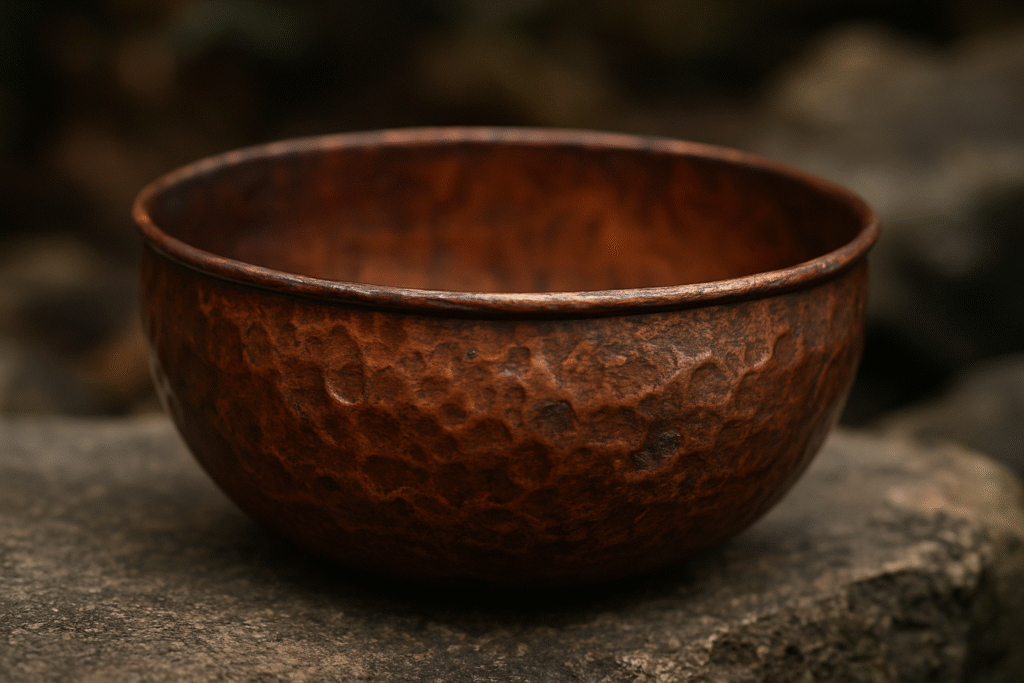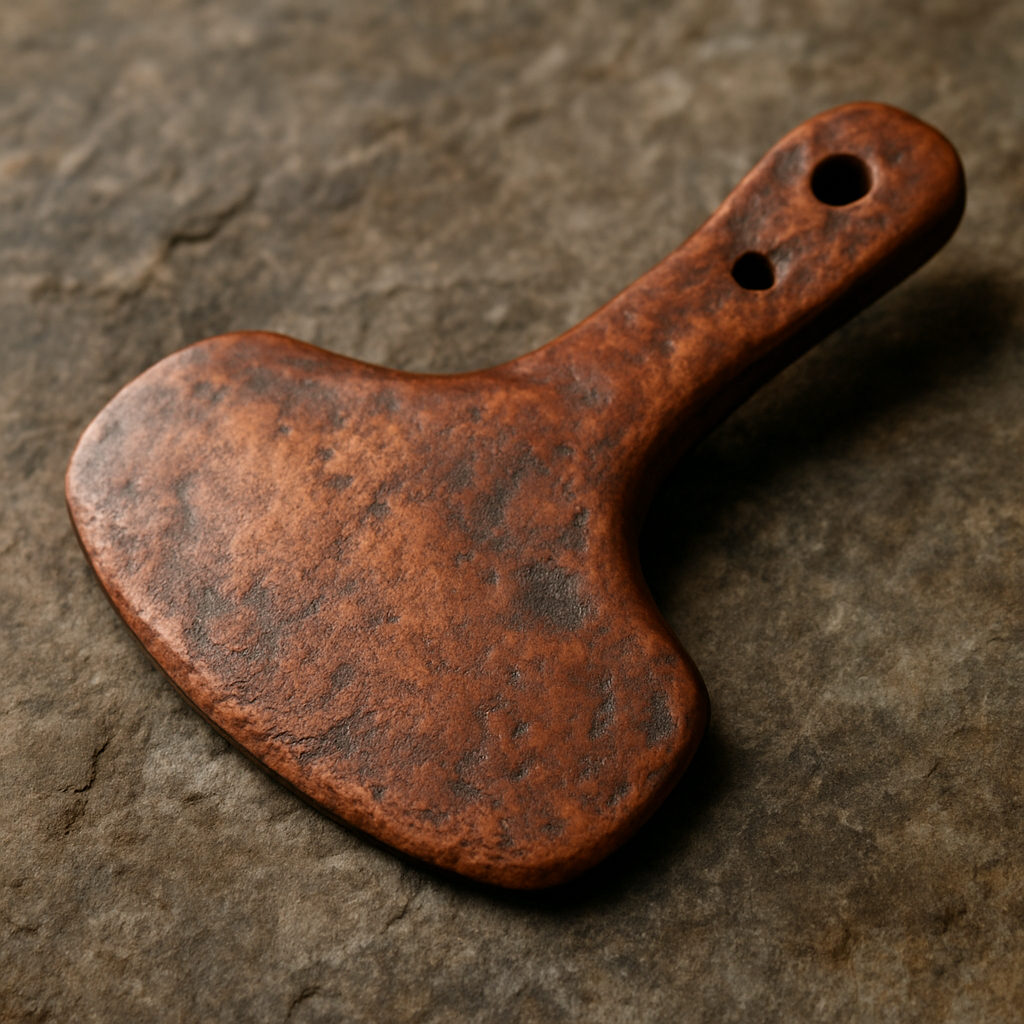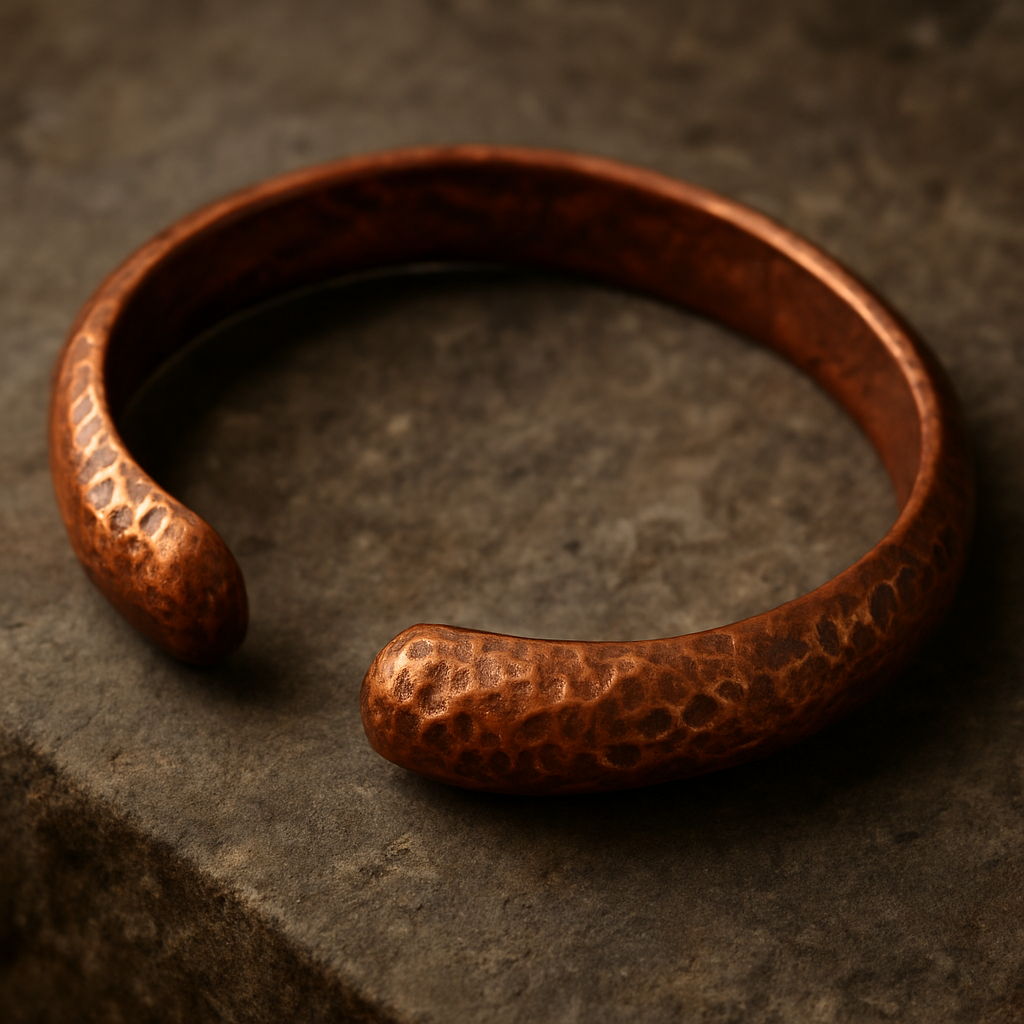In the dry hills of Anatolia, in the deserts of Sinai, and deep within the Andes, humans once struck the earth and pulled from it a metal that would change the rhythm of civilization: copper. Long before iron sharpened swords and bronze forged empires, copper shimmered in the firelight of the earliest smelting pits, offering itself as both tool and talisman.
The First Metal
Archaeologists believe copper was the first metal to be shaped by human hands. Unlike iron, which requires punishing heat to release from ore, copper could be found in native lumps, glinting in riverbeds and mountain veins. For Neolithic peoples, this was no ordinary stone—it could bend, shine, and take form. By 9,000 years ago, small hammered beads and awls already spoke of a new material culture.

As villages grew into cities, copper became the foundation of trade. The metal’s warmth in color and malleability in form meant it was not only practical for tools but symbolic in ritual. Copper amulets were worn against evil, and in Sumerian texts, the goddess Inanna was called “the Lady of Copper,” her temples adorned with the metal’s reddish glow.
Between Craft and Cosmos
In Egypt, copper was mined in the unforgiving Sinai desert, where turquoise veins and copper ore lay side by side. The workers who toiled there carved prayers into the rock, invoking gods to protect them from the burning sun and the collapse of mines. Tools fashioned from copper armed the builders of pyramids; sacred vessels carried offerings to the dead.

Far to the east, in the Indus Valley and China, copper also appeared, often alloyed with tin or arsenic to create harder forms. Its value was never purely practical: its fiery hue and resistance to corrosion tied it to myths of immortality, renewal, and the cycles of the sun. In Mesoamerica, later cultures such as the Mixtec and Aztec would use copper for bells and ritual instruments, their tones ringing through ceremonies as if calling on unseen worlds.
Fragility and Endurance
Yet copper was not invincible. Pure copper tools dulled quickly; weapons bent under strain. It was only when copper met tin that bronze was born, and empires rose with it. Still, copper did not vanish—it remained the quiet, enduring metal of artisans, farmers, and priests. Where bronze symbolized power, copper often symbolized life itself.
Even today, copper flows through our world unseen, running in wires beneath streets and walls, carrying the pulse of electricity like veins of fire through a global body. What was once divine is now everyday—and yet its presence is no less vital.
The Legacy of Flame
To touch an ancient copper artifact is to feel more than history—it is to hold the first whisper of humanity’s mastery over the elements. Its glow connects the miner chiseling in darkness, the smith hammering at dawn, and the priest raising a vessel of offerings under the stars.

Copper reminds us that civilization did not begin with conquest but with craft—with the simple act of striking stone against stone until sparks leapt, and in those sparks, the first light of progress was born.


Reply